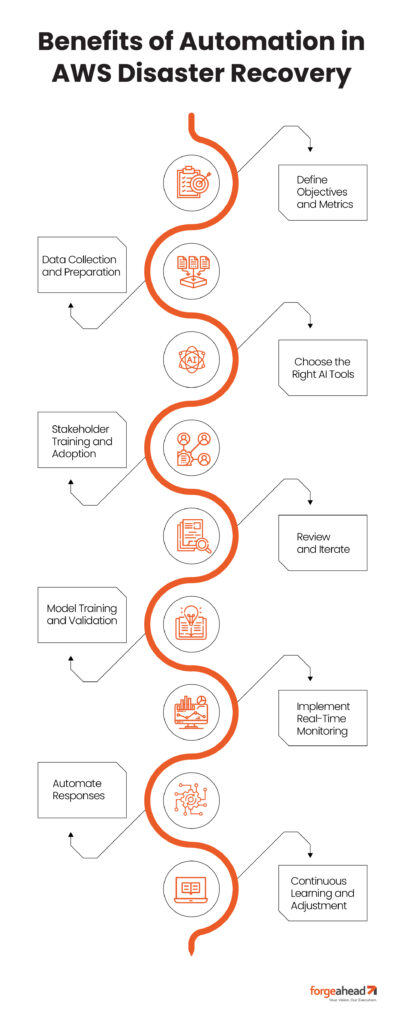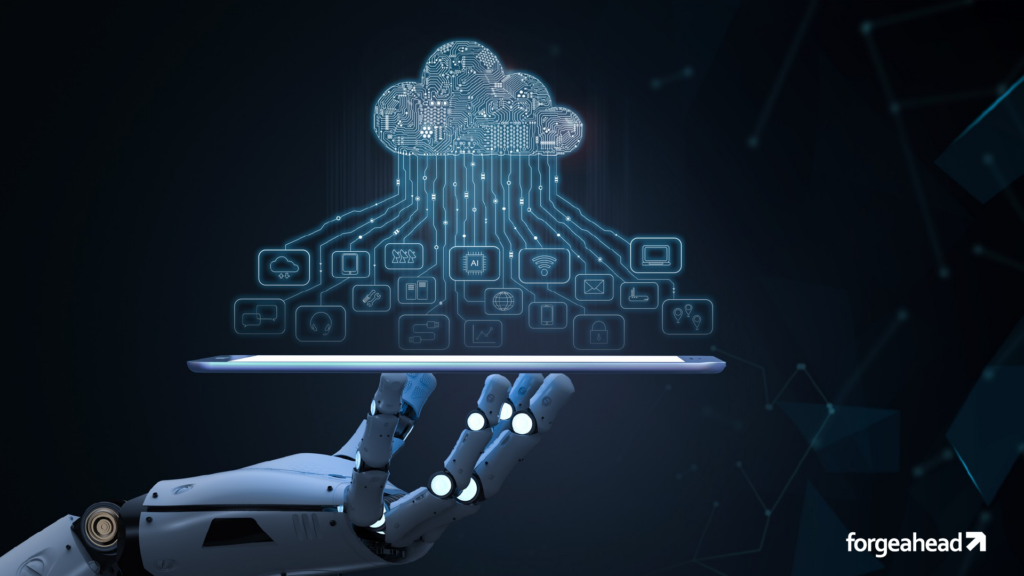Last updated on October 21st, 2024
Have you considered the crucial role API gateways play in your digital ecosystem? Beyond routing API requests, they’re vital for seamless service delivery and enhancing user experiences.
Yet, many organizations still rely on outdated, reactive maintenance strategies, addressing issues only after they disrupt operations. What if you could prevent these problems before they start?
This is where AI and predictive analytics come into play, transforming API gateway management from reactive firefighting to proactive strategizing. By integrating AI, you can anticipate and mitigate potential disruptions, ensuring smooth, reliable service.
Ready to see how AI can reduce downtime and optimize your operations? Let’s explore the transformative impact of AI on API gateway maintenance.
Understanding Predictive Maintenance
Predictive maintenance is a transformative approach that leverages data analytics to predict failures before they occur.
Traditional maintenance reacts to problems after they cause damage or disruption. In contrast, predictive maintenance uses advanced algorithms. These algorithms detect signs of potential issues early in the cycle.
How Predictive Maintenance Works
Predictive maintenance in API gateways involves collecting data from various metrics like traffic volume, response times, error rates, and system anomalies.
This data feeds into machine learning models that analyze patterns and predict potential downtimes or failures, allowing IT teams to intervene before problems impact users.
Benefits of Applying Predictive Analytics to API Gateways
1. Enhanced Reliability:
By predicting and addressing issues before they cause failures, predictive maintenance significantly boosts the reliability of API gateways.
2. Reduced Downtime:
Proactive issue resolution means less unexpected downtime, ensuring a smoother, uninterrupted service for end-users.
3. Cost Efficiency:
Minimizing emergency repairs and downtime reduces costs associated with reactive maintenance efforts.
4. Improved Performance:
Regular tweaks and optimizations based on predictive insights can enhance the overall performance of the API gateway, leading to faster response times and better scalability.
5. Data-Driven Decisions:
With concrete analytics at your disposal, decision-making becomes more informed and strategic, focusing on data trends rather than assumptions.
Isn’t it time your API management caught up with the rest of your tech-forward strategies?
The Setbacks of Reactive Maintenance
Reactive maintenance—addressing system issues only after they’ve occurred—is an outdated strategy that many organizations still reluctantly follow.
This approach, especially in the context of managing API gateways, comes with significant limitations that can ripple through an entire business, impacting both operational efficiency and user experience.
Key Limitations of Reactive Maintenance
1. Increased Downtime
Reactive strategies often lead to longer downtimes since issues are only addressed after they have disrupted services. This can result in significant operational delays and a poor user experience.
2. Higher Costs
The ad-hoc nature of reactive maintenance usually incurs higher costs. Emergency repairs and last-minute technician deployments are often more expensive than planned, routine maintenance.
3. Reduced Lifespan of Systems
Continuously operating systems until failure can exacerbate wear and tear, potentially leading to a shortened lifespan and more frequent replacements.
4. Unpredictable Workloads
Without a predictive plan, workloads can spike unexpectedly, putting additional stress on support teams and other resources.
5. Loss of Customer Trust
Frequent outages or performance issues can erode user trust and satisfaction, potentially driving customers to seek more reliable alternatives.
Impact on Business and User Experience
The consequences of sticking with reactive maintenance extend beyond immediate technical challenges.
The unpredictable nature of emergencies can strain relationships with stakeholders and clients, who expect reliability and professionalism in service delivery.
Moreover, operations can become a scramble, characterized by frequent crisis management meetings and patchwork solutions, rather than strategic, forward-thinking initiatives.
Embracing a proactive maintenance approach not only alleviates these pressures but also transforms API gateway management into a predictable, controlled aspect of IT operations.
Why wait for the next breakdown when you can prevent it?
Benefits of AI in API Gateways
Integrating Artificial Intelligence (AI) into API gateway management can transform how businesses handle their digital traffic and services.
Here’s a look at the key advantages:
1. Enhanced Reliability
AI helps predict and prevent potential failures by continuously analyzing traffic and usage patterns, ensuring higher uptime and reliability.
2. Performance Optimization
AI algorithms can dynamically adjust resources to meet demand without human intervention, optimizing performance, especially during peak loads.
3. Cost Efficiency
With AI, unnecessary resource allocation is minimized, reducing operational costs. AI-driven automation also decreases the need for manual oversight, further cutting expenses.
4. Proactive Security
AI enhances security protocols by automatically detecting and mitigating potential threats in real time before they affect the system.
5. Improved User Experience
By ensuring smooth operation and reliable access, AI helps maintain a positive user experience, which is crucial for customer retention and satisfaction.
6. Data-Driven Insights
AI can analyze vast amounts of data from API usage to provide insights that can inform better decision-making about system enhancements and innovations.
7. Automated Scalability
AI systems can predict scale needs and automatically adjust the API gateway infrastructure to accommodate changing demands without manual scaling.
8. Reduced Human Error
By automating routine and complex tasks, AI reduces the chances of human errors that can lead to system outages or security breaches.
These points illustrate how AI not only enhances the technical management of API gateways but also drives significant business benefits by improving efficiency, reliability, and user satisfaction.
Forecasting and Preventing Issues with AI
The integration of AI-powered predictive analytics into API gateway management marks a significant advancement in predictive maintenance strategies.
By leveraging sophisticated AI algorithms, organizations can not only anticipate potential issues but also automate preventive actions to ensure continuous, efficient operations.
Here’s how AI transforms predictive maintenance:
1. Advanced Forecasting Abilities
AI algorithms are trained on historical and real-time data to identify patterns and anomalies that may indicate future failures. This predictive capability allows IT teams to address issues before they escalate, preventing potential downtime.
2. Automated Anomaly Detection
AI-powered systems continuously monitor API gateway metrics and traffic data. When these systems detect anomalies that deviate from normal patterns, they automatically trigger alerts. This immediate detection is crucial for preventing disruptions that could affect user experience.
3. Dynamic Problem Solving
Beyond detecting issues, AI algorithms can suggest or even implement solutions automatically. For instance, if traffic congestion is predicted, AI can reroute requests to less busy servers to balance the load without human intervention.
4. Efficiency at Scale
As API gateways grow in complexity, manually monitoring all components becomes impractical. AI scales to handle large volumes of data and a multitude of endpoints, maintaining high levels of performance and reliability.
5. Learning and Adapting
One of the most powerful aspects of AI in predictive analytics is its ability to learn from new data. Over time, AI models refine their predictions, becoming more accurate and providing more reliable forecasts and solutions.
6. Proactive Maintenance Scheduling
AI algorithms can predict the optimal times for maintenance based on usage patterns and predicted stress periods, ensuring that maintenance occurs without impacting operational efficiency.
Optimizing AI Integration in API Gateways
Successfully implementing AI in API gateways requires a thoughtful approach to ensure that the technology not only integrates smoothly but also delivers substantial benefits.

Ensuring Scalability and Reliability
As organizations expand, the AI-powered systems managing their API gateways must not only keep up but also maintain unwavering reliability.
Here’s how to ensure your AI implementations scale effectively and remain dependable under varying loads:
1. Modular Architecture
Design your AI systems with a modular approach, allowing for components to be independently scaled. This flexibility helps manage growing data volumes and user demands without overhauling the entire system.
2. Elastic Resources
Utilize cloud services that offer elastic scalability. Services like AWS Auto Scaling can automatically adjust the number of active servers based on the current load, ensuring that the AI system always has adequate resources to perform optimally.
3. Load Balancing
Implement load balancing to distribute data processing and inference tasks evenly across multiple servers. This not only enhances responsiveness but also prevents any single point of failure from crippling your operations.
4. Data Management Strategies
Adopt smart data management strategies such as data partitioning and indexing, which help in handling large volumes of data more efficiently. This ensures that the system remains fast and responsive, even as data accumulates.
5. Regular Stress Testing
Conduct regular stress tests to evaluate how well your AI system handles high traffic and data loads. Use the insights from these tests to fine-tune resource allocation and optimize performance.
By focusing on these key strategies, you can assure that your AI-powered API gateways not only grow with your business but also continue to provide reliable, responsive service that meets the needs of your users and stakeholders.
Parting Thoughts
Embracing AI to shift from reactive to proactive maintenance in your API gateways represents a significant leap towards enhanced efficiency and reliability.
By predicting and preventing issues before they disrupt your operations, AI empowers you to maintain seamless digital services that your users can rely on.
Ready to transform how you manage your API infrastructure?
Start integrating AI today and witness a revolutionary change in your maintenance strategy.
Need expert guidance? Contact Forgeahead.
Our team is ready to help you tailor AI solutions that perfectly fit your needs, ensuring your API gateways are not just maintained but truly optimized.
Let’s innovate and lead together—reach out now to begin your journey to smarter maintenance with AI.



